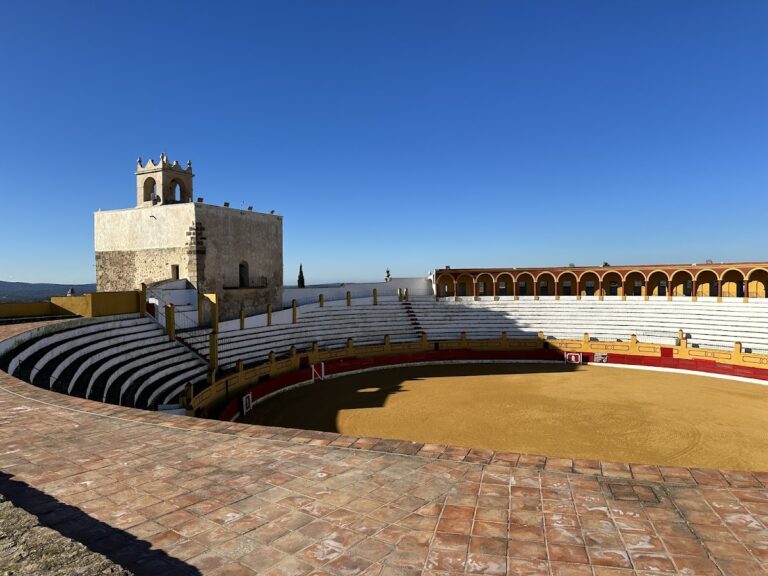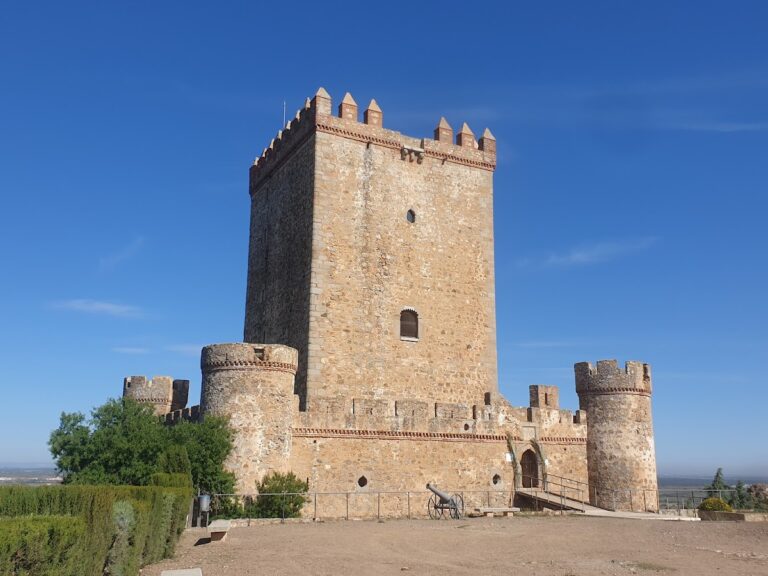Castillo de Alconchel: A Historic Fortress in Spain
Visitor Information
Google Rating: 4.3
Popularity: Low
Google Maps: View on Google Maps
Official Website: ayuntamientodealconchel.es
Country: Spain
Civilization: Unclassified
Remains: Military
History
The Castillo de Alconchel is situated on Miraflores hill within the municipality of Alconchel in Spain. Its origins trace back to the 12th century, when a Christian fortress was established atop this strategic elevation.
Before the Christian construction, the site was noteworthy for its continuous occupation and importance through various historical periods. Archaeological discoveries show that the hill served as a significant location during pre-Roman, Roman, and Visigothic times, underscoring its longstanding military and strategic value. Although a Muslim fortress once stood here, no physical remains survive from that period, the local place name preserving the memory of Islamic presence.
In 1145, the site fell under Portuguese control but was soon captured by the Kingdom of León. The Christian reconquest led by Alfonso I of Portugal in 1166 firmly established the fortress as a Christian stronghold. Between 1264 and 1312, the castle entered a new phase under the custodianship of the Knights Templar, granted to them by King Fernando III of Castile and León before his campaign to conquer Seville. Following the suppression of the Templars, the castle passed to the Order of Alcántara, a military order with territorial authority in the region.
Significant enhancements occurred in the 14th century, a time when the castle became a contested site amid frequent armed clashes between Portuguese and Spanish forces due to its position near the border. Later, during the second half of the 16th century, Gutierre de Sotomayor, Master of the Order of Alcántara, directed renovations that adapted the fortress for artillery and heavier weaponry, reflecting evolving military technologies.
From 1690 through the 19th century, the castle was incorporated into the marquisate of San Juan de Piedras Albas and Bélgida, marking its role as part of a noble estate before eventual changes in its function in later centuries.
Remains
The Castillo de Alconchel exhibits an elongated footprint that follows the shape of the Miraflores hilltop. Its defensive structures are arranged in nearly concentric layers adapting closely to the terrain’s natural contours. Areas that were more exposed received additional fortifications according to the lay of the land, demonstrating a careful integration of architecture with topography.
At the highest point of the hill, the main body of the castle stands, accessed through a pointed Gothic gate. This entrance is fortified by two cylindrical towers that rise above the connecting walls, serving both defensive and visual purposes. The surrounding enclosure features battlemented (crenellated) walls pierced with narrow openings known as arrow slits, which allowed defenders to shoot while remaining protected. The corners are reinforced by cylindrical bastions, with a decorative double brick molding outlining the tops of both the battlements and the towers, adding stylistic detail to the military construction.
Within this upper enclosure lies a large square keep tower and attached residential quarters. The keep rises three stories, each separated by cornices—horizontal decorative moldings—highlighting the structure’s vertical divisions. This tower, once crowned with battlements, is markedly taller and more prominent than other parts of the fortress. Its walls are pierced by several arrow slits and window-like openings, which offered expansive views over the surrounding landscape, facilitating early detection of approaching forces.
The keep has two entrances. The main doorway is framed by a pointed arch characteristic of Gothic architecture and topped by an alfiz, a Moorish-style rectangular frame around the arch which once displayed heraldic symbols of the castle’s owners. A secondary, simpler door is located on the opposite side of the tower, used presumably for less formal access or emergencies.
Surrounding archaeological findings enrich the understanding of the site’s depth of use. Foundations composed of large cyclopean masonry blocks reflect early construction techniques, likely pre-Roman. In addition, Roman-era tombstones and fragments of columns recovered at the base of the hill attest to the significance of the location during antiquity. Furthermore, Visigothic coins provide evidence of continued occupation and strategic importance during the early medieval period.
Together, these elements reveal the Castillo de Alconchel not only as a formidable medieval fortress but also as a site with a long legacy of human presence and defensive purpose spanning several historical eras.










